Manitou Mattoc Pro Fork
(discontinued)
| Where To Buy | |||
|---|---|---|---|
Free shipping on orders over $50 (continental U.S. only).
International shipping available. Some exclusions apply. |
Free shipping on orders over $50 (continental U.S. only).
International shipping available. Some exclusions apply. $1,099.00
|
||
Free shipping on orders over $50 (continental U.S. only).
International shipping available. Some exclusions apply. |
|||
Review by Fred Robinson // Photos by Ian Collins
After a promising looking product launch from Manitou, we were anxious to get our hands on their newest offering, the Mattoc fork. Aimed at the All Mountain side of the sport, we were excited to learn that the Mattoc borrowed some tech from its big brother, the Dorado, and features the well received DH Dual Chamber Air cartridge and the HBO feature on the compression side of things. With Manitou's somewhat shaky history and relatively recent success with the re-release of the Dorado DH fork, we really had no idea where the Mattoc would stack up, but we were definitely very excited to give it a good bashing around to find out.

Initial Impressions
Being used to forks that need a significant break in period, we were surprised at how smooth the fork felt right out of the box. There was minimal stiction on the initial new fork squish test in the living room, and once we mounted it on the bike we felt zero stiction at all. It doesn't take a genius to figure out Manitou's QR15 Hexlock axle system, but we managed to let it confuse us for a minute or two. Once we figured out that it functions more like a traditional quick-release skewer than say, Fox's QR15 axle, the Hexlock system clamped up just fine and felt pretty darn stiff to boot.

Manitou Mattoc Pro Highlights
- Weight: 1877g
- Travel: 140, 150, 160, 170 (26” only)
- Spring: DH Air (Dorado)
- Bottom out: Adjustable HBO (Hydraulic Bottom Out) and Rubber Bumper
- Steerer: 1.5” Taper
- Crown: Forged Deep Bore Hollow
- Crown Finish: Color Matched
- Offset: 41mm (26”) / 44mm (27.5”)
- Compression Damping: TPC Technology MC²-In Leg
- Rebound Damping: Adjustable TPC Cartridge
- Adjustments: Air, Compression (High Speed and TPC+), Hydraulic Bottom Out, Rebound
- Stanchion Diameter: 34mm
- Stanchion Material: 7050 Butted Aluminum
- Available wheel sizes: 26”, 27.5”
- Brake: Post Mount 180mm
- Axle: QR15
- Axle to Crown: 525 / 535 / 545 / 555 (26”) OR535 / 545 / 555 (27.5”)
- MSRP:$860.00
On The Trail
We started our testing of the Mattoc with the LSC (low speed compression) adjustment all the way out and immediately knew this was not our ideal setup. Ramping up the LSC as the ride continued, we finally reached maximum LSC before we were satisfied with the fork's support. Worried this would result in a harsh ride, much to our surprise and the joy of our hands, this wasn't the case; the Mattoc tracked well in the stutters and never spiked nor felt harsh during rough, successive mid-sized hits.

One of the features that really shined on this fork was the HBO adjustment. HBO is a position sensitive compression adjustment that allows you to control the last 32mm of travel independently of your high and low speed settings. This allowed us to set the fork up for a wide range of trail types. From lots of climbing to chunky DH style trails with bigger hits, we were able to keep the fork's settings pretty consistent despite a variety of trail conditions. That translated to less guess work from trail to trail and less time fiddling with settings between tracks and during rides.

Manitou addressed their previous issues with a long axle to crown length due to their reverse-arch design; the Mattoc's A2C measurement is now right around all its competitors. Even so, it should be noted that on steeper climbs, the fork can wander a bit and lacks a travel adjust setting that might normally dial that out. While not a deal breaker at all given the fork's intended purpose, if it's a feature you're specifically seeking you should know it's not an option offered in the Mattoc range.

In regards to rebound, Manitou has made available multiple shim configurations if you're unhappy with the range or feel provided in the factory installed stack. We had no issues with the rebound as it was straight from Manitou after adjusting it to our preference.

Long Term Durability
Having been on the Mattoc for the past 6 weeks we haven't noticed any early signs of durability issues. The seals have held up well in a variety of riding conditions, some being far from ideal. We did notice mud and debris tends to collect where the reverse-arch meets the lowers, but as stated above, the seals/dust-wipers have continued to function properly.
Things That Could Be Improved
Our only gripe with the Mattoc is pretty minor in the big picture. Due to the reverse-arch design, traditional cable routing of the front brake line isn't possible; well, it is possible, but can pinch your line at full travel and is not recommended. It may be just an aesthetic thing and probably the OCD side of being a bike mechanic coming out, but still irks this tester to see that cable routing.
Manitou also neglected to make a 29er version of the Mattoc, so if you're on big wheels, you're out of luck if you want to run this fork. Why Manitou decided not to produce a 29er version is a mystery to us, as it seems more aggressive mid to long travel 29er bikes are gaining traction.
What's The Bottom Line?
We're happy to report that Manitou has another great fork in their lineup. Borrowing features from the DH line has helped create a great option for riders who pedal up to earn their descents. The Mattoc's adjustments allow for a wide range of terrain to be handled with minimal tinkering of the dials and keeping all the important dials externally adjustable should appeal both to users who enjoy fiddling with their set-up and those who enjoy a set and forget type of fork.
Visit www.manitoumtb.com for more details.
About The Reviewer
Fred Robinson, a.k.a. "Derf," has been on two wheels since he was two years old. He picked up a mountain bike in 2004 and started racing downhill in 2006. He has seen moderate success racing CAT 1 but focuses his efforts on building, maintaining and riding his local trails. He's deceptively quick for a bigger guy and likes steep, fast trails where he can hang it off the back of the bike. As a SoCal native he mostly rides trails covered with loose, traction-less turns and sharp, immovable rocks. Besides downhill, he rides trail bikes, road, and also enjoys the occasional dirt jump session. He is currently a student at UCSD and a wrench at a local bike shop.
1 member reviews
Great feeling air spring.
Low weight.
User serviceable and tuneable.
Reverse arch may present issues with mud and hose routing.
Proprietary tools.
The Mattoc easily stands up to its competition in the form of the Rockshox Pike and Fox 34 in a more tuneable and cheaper package.
As a lighter rider (65Kg) I have long felt that the market leading forks from the big brands are overdamped. Those forks have to please a wide range of riders and I found myself just outside of the range of externally adjustable damping. Though, even if you’ve never found a problem with the damping range of your fork, the user tuneable damping (and air spring) of the Mattoc is a feature that you just don’t get with a Pike or 34.
Excited at the prospect of tuning the fork myself (with the help of readily available documentation and base tunes from Manitou) I picked up a Mattoc Pro 2 for £400 which I felt was an absolute steal only for the price to drop even further lately!
After a week riding the fork in stock configuration it became apparent I didn’t actually need to re-tune the damper. The stock damper configuration seems to have more range than those on offer from Rockshox and Fox, likely due to the combination of adjustable high and low speed compression. I was able to easily settle on a very active tune off the top that provided plenty of damping for high speed impacts and the hydraulic bottom out feature further helps prevent harsh or uncontrolled bottom outs. I’m not a suspension tuning expert, nor am I a bike mechanic but I know how I want my suspension to feel and had I felt the need I would have been comfortable diving into the damper, empowered by the tuning material and literature provided by Manitou.
I was pleasantly surprised to find myself within the stock range of the damper (if a little disappointed I had no excuse to tinker with it) but what I really hadn’t expected was that the air spring would feel as good as it does. When it comes to air springs all are not created equal and the Dorado Air in the Mattoc is superb. I always found the Pike to be quite divey - good top and end stroke but pretty much useless in the midstroke - and it’s here that the Mattoc really shines. It has the same supple top stroke that I’ve come to expect but it has far, far superior mid stroke support to the Pike. Manitou offer an aftermarket upgrade for the Dorado Air spring (https://www.manitoumtb.com/products/parts-and-accessories/mrd-irt/) which claims to even further improve the top and midstroke though, like the damper, I haven’t felt any improvements to the stock configuration necessary.
In my opinion the Mattoc bests the Pike again in chassis stiffness, providing at very least the same amount of chassis support, despite narrower stanchions and low weight. It feels as though it tracks better in corners and rough sections where side loads can be a frustration. I won’t claim it’s a clear step ahead and obviously haven’t tested in a lab but it feels like a bigger fork than the 34mm stanchions would have you think and marginally stiffer than the 35mm Pike. At worst you can assume the Mattoc is at least as stiff as the Pike.
The reverse arch isn’t for everyone and during a recent race in horrendous conditions (2017 Ard Moors) it did seem to gather more mud around the dust wipers than riders with forward facing arches. I think Manitou are aware of this issue and it may be why they now offer the fork with a built in mudguard (of which there are fewer aftermarket options than traditional forks). However outside of those axle-deep-mud conditions I haven’t experienced the problem again.
A tooled through-axle can be either Pro or Con depending which side of the fence you sit. But I can say that it’s a well implemented design and feels more secure than a Maxle for example.
To open the fork up you’ll need a thin wall 8mm socket and a special cassette tool but once you’ve acquired the two the fork is a pleasure to work on (the cassette tool interface becoming the new standard which seems to be replacing the shallow hex sockets that can all too easily become damaged and tool-marked).
If there are any areas where the Mattoc falls short (and I struggle to think of any real stand out areas) then one look at the price should be enough to convince of its merit over the competition.
0 comments
Post a reply to: High Performance, High Value
Specifications
| Where To Buy | |||
|---|---|---|---|
Free shipping on orders over $50 (continental U.S. only).
International shipping available. Some exclusions apply. |
Free shipping on orders over $50 (continental U.S. only).
International shipping available. Some exclusions apply. $1,099.00
|
||
Free shipping on orders over $50 (continental U.S. only).
International shipping available. Some exclusions apply. |
|||





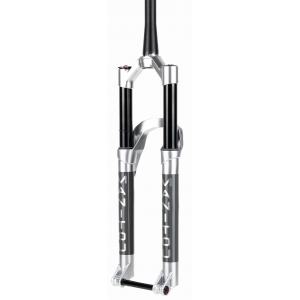


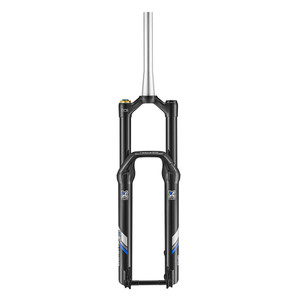
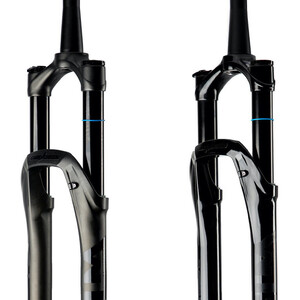
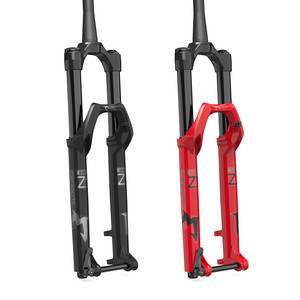


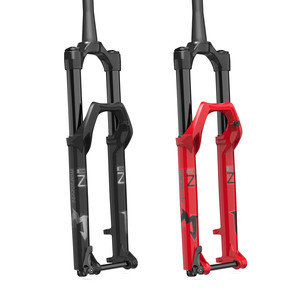
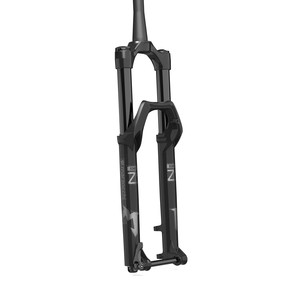






7 comments
Post a reply to: Tested: Manitou Mattoc Pro Fork